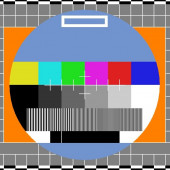Our website uses cookies so we can analyse our site usage and give you the best experience. Click "Accept" if you’re happy with this, or click "More" for information about cookies on our site, how to opt out, and how to disable cookies altogether.
We respect your Do Not Track preference.

The Broadcasting Standards Authority (BSA) has ruled that TVNZ breached privacy standards in reporting on a fatal bus crash in 2016. The bus was carrying students and teachers from a Tongan school band who were visiting New Zealand to fundraise for their school.
Over 50 people were on board the bus when it crashed south of Gisborne on Christmas Eve, with three people killed and many injured in the accident. The 1 News item featured photos of two of the deceased victims and photos of the injured passengers, sourced from a public Facebook page for the Tongan community.
The BSA upheld a complaint that the use of the photographs breached the privacy standard of the Free-to-Air Television Code of Broadcasting Practice.
While photos on a publicly accessible Facebook page are generally regarded as in the public domain and available for use by broadcasters, broadcasters are not exempt from considering the privacy standard, particularly in sensitive circumstances involving grief and trauma. One person was shown in intensive care, ventilated and with bandaging to his face, and was not likely conscious at the time the picture was taken.
In making its finding, the BSA had to assess whether the patients were identifiable, whether the broadcast disclosed private information or material about them (this depends on whether a person has a reasonable expectation of privacy in relation to the information or material) and whether the disclosure was highly offensive from the perspective of an objective reasonable person.
The BSA was satisfied that the patients were identifiable in the photos. Although there is usually no reasonable expectation of privacy in relation to matters of public record, in some cases, there may be. In this particular case, the BSA considered the patients in the photos were in a particularly vulnerable situation and the images of their injuries, in connection with their involvement in a fatal accident, was sensitive information over which they would have had an expectation of privacy.
The BSA acknowledged that in times of trauma, it is important for the Tongan community, particularly the church community, to rally around the victims, their friends and family, and that one way this is done is through social media platforms that connect the community when family members are overseas. The BSA also noted that Tongan community Facebook groups often feature photos to support or honour those who have passed.
Nevertheless, the BSA decided that a public Facebook page connecting community members with a common bond is different to a national media platform. Broadcasting the images in a national news item widened the potential audience beyond the community for whom the images were shared. The use of the images was unreasonable given the patients’ highly vulnerable situation and it was unnecessary to show graphic imagery of the victims’ injuries, especially while unconscious.
While the BSA determined there had been a breach of privacy, the authority acknowledged that the item was not overly sensationalised or demeaning to the people featured, and the photos were handled in a sensitive manner.
In the circumstances, the BSA felt, rather than making any orders, the most effective remedy was to issue the decision identifying the care needed when using social media content, particularly in sensitive circumstances. The BSA is undertaking research into views on privacy and social media, including views about broadcaster’s rights to access and republish social media content, to give guidance on the issues raised in this case.
Note: As news media organisations are exempt from the Privacy Act in relation to news activities, privacy complaints about broadcasters are handled by the BSA rather than by the Privacy Commissioner.
Image credit: Televisión Española testcard via Wikipedia
Back